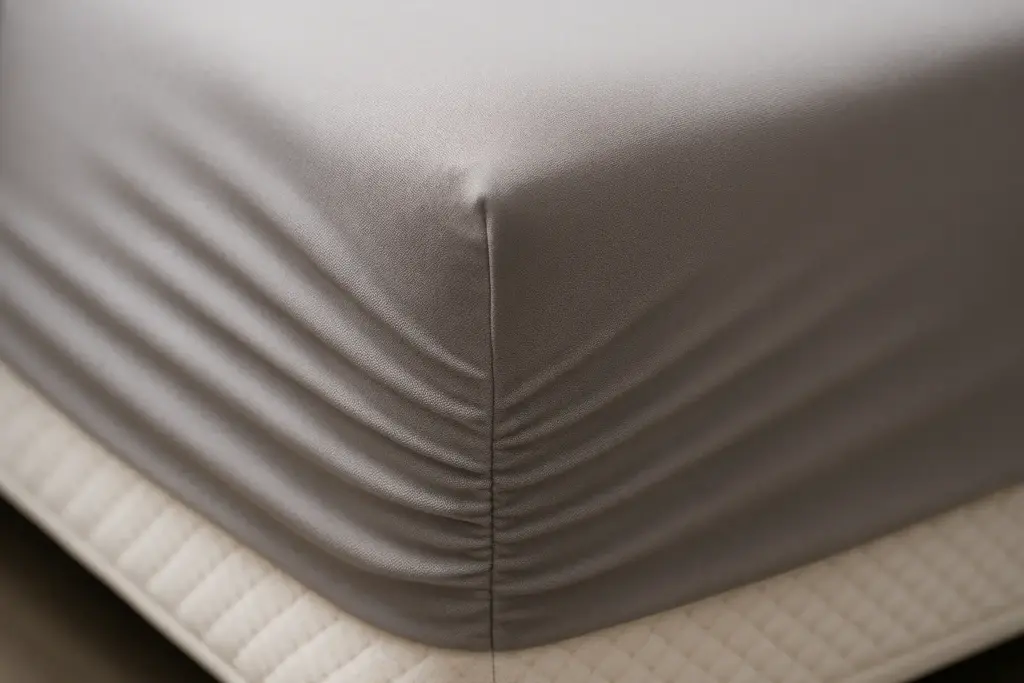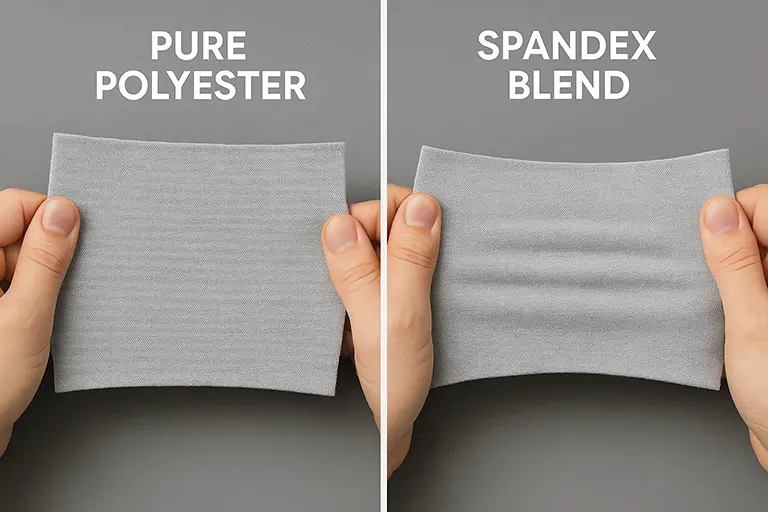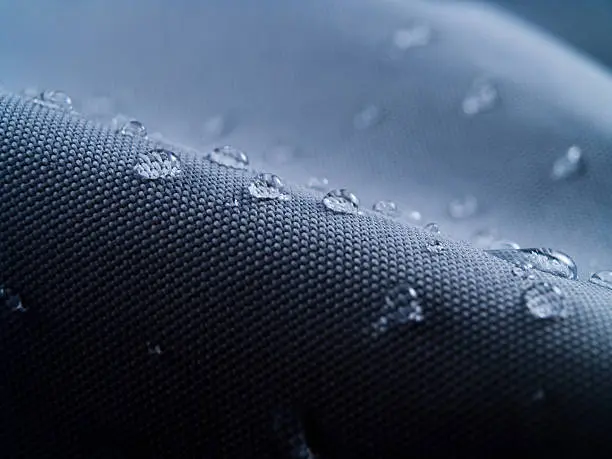Polyester is one of the most widely used synthetic fibers in the world, valued for its strength, durability, and cost-efficiency. But when it comes to flexibility and comfort, many people wonder: Is polyester stretchy? The answer is—yes, but with conditions.
This article breaks down how polyester behaves in terms of stretch, how it’s engineered for elasticity, and where stretchable polyester is commonly used—particularly in bedding, apparel, and functional textiles.
What Is Polyester?
Polyester is a synthetic fiber made from petroleum-based polymers, primarily polyethylene terephthalate (PET). It is known for being:
- Durable and wrinkle-resistant
- Moisture-wicking and quick-drying
- Lightweight and versatile
- Easy to blend with other fibers
Its molecular structure provides dimensional stability, which contributes to its natural resistance to stretching—but that’s only part of the story.

Is 100% Polyester Stretchy?
Naturally, Not Very
Pure polyester is not highly stretchy on its own. It offers minimal mechanical stretch, which means it can resist shape distortion under tension but won’t stretch significantly without specific engineering.
However, It Does Have “Give”
While 100% polyester doesn’t stretch like spandex, it can exhibit slight give in woven or knit constructions—especially when cut on the bias or manufactured using specific knitting techniques (e.g., interlock or jersey knits).
How Polyester Becomes Stretchy
1. Knitted Polyester
- Knit constructions (vs. woven) allow for natural mechanical stretch, especially in bedding fabrics like fitted sheets or mattress protectors.
- Example: Jersey knit polyester sheets stretch slightly to hug a mattress snugly.
2. Blending with Elastic Fibers
- Most stretchable polyester fabrics are blended with spandex (elastane) or Lycra® to achieve higher elasticity.
- Common blends: 95% polyester + 5% spandex for a smooth and elastic fabric that stretches in multiple directions.
3. Texturing and Yarn Engineering
- Crimped or textured yarns are engineered to mimic stretch, especially in high-performance or athletic fabrics.

Polyester Stretch in Bedding Applications
| Application | Stretch Level | Construction | Notes |
|---|---|---|---|
| Fitted Sheets | Moderate | Knit or blended | For secure fit over deep mattresses |
| Mattress Protectors | High | Polyester + Spandex | Enhances flexibility and reduces shifting |
| Pillow Covers | Low–Moderate | Microfiber weaves | Some give for form-fitting or zippered designs |
| Bed Skirts / Liners | Low | Woven | Often no stretch; structural design prioritized |
Pros and Cons of Stretchy Polyester in Textiles
Advantages
- Excellent shape retention
- Comfortable fit (especially in clothing or bedding)
- Wrinkle- and shrink-resistant
- Cost-effective elasticity when blended
Limitations
- Pure polyester is not stretch-forward
- Overstretching can affect fiber structure if not reinforced
- Static build-up and breathability can be issues in lower-quality fabrics
Is Stretchy Polyester Durable?
Yes—polyester is highly durable, and when blended properly, retains elasticity over time. In commercial settings (e.g., hospitality or retail textiles), stretchy polyester is preferred for:
- Easy-care maintenance
- Form-fitting performance
- Colorfastness and longevity
Blends like polyester-spandex are commonly used in mattress encasements, hotel pillow covers, and form-fitted linens that must withstand repeated industrial laundering.
Conclusion
While 100% polyester is not inherently stretchy, it can be engineered or blended to provide varying levels of stretch depending on the end use. For manufacturers and sourcing managers, understanding these differences is essential for selecting the right fabric for performance, comfort, and durability.
Whether you’re developing bedding that hugs tightly, performance apparel, or easy-care commercial linens, stretchy polyester offers a smart, cost-effective textile solution with long-lasting results.


Leave a Reply